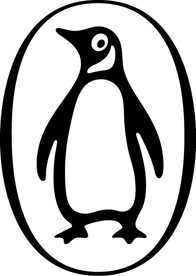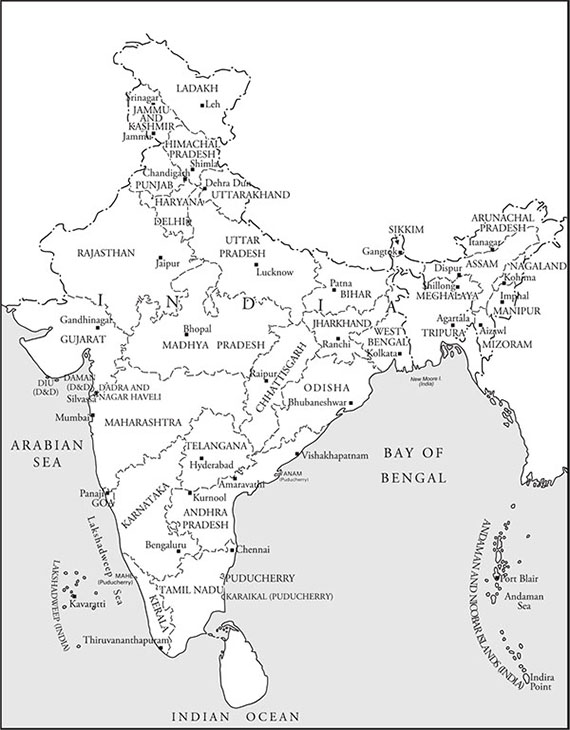Venkataraghavan Subha Srinivasan - The Origin Story of Indias States
Here you can read online Venkataraghavan Subha Srinivasan - The Origin Story of Indias States full text of the book (entire story) in english for free. Download pdf and epub, get meaning, cover and reviews about this ebook. year: 2021, publisher: Penguin Random House India Private Limited, genre: Politics. Description of the work, (preface) as well as reviews are available. Best literature library LitArk.com created for fans of good reading and offers a wide selection of genres:
Romance novel
Science fiction
Adventure
Detective
Science
History
Home and family
Prose
Art
Politics
Computer
Non-fiction
Religion
Business
Children
Humor
Choose a favorite category and find really read worthwhile books. Enjoy immersion in the world of imagination, feel the emotions of the characters or learn something new for yourself, make an fascinating discovery.
- Book:The Origin Story of Indias States
- Author:
- Publisher:Penguin Random House India Private Limited
- Genre:
- Year:2021
- Rating:4 / 5
- Favourites:Add to favourites
- Your mark:
- 80
- 1
- 2
- 3
- 4
- 5
The Origin Story of Indias States: summary, description and annotation
We offer to read an annotation, description, summary or preface (depends on what the author of the book "The Origin Story of Indias States" wrote himself). If you haven't found the necessary information about the book — write in the comments, we will try to find it.
The Origin Story of Indias States — read online for free the complete book (whole text) full work
Below is the text of the book, divided by pages. System saving the place of the last page read, allows you to conveniently read the book "The Origin Story of Indias States" online for free, without having to search again every time where you left off. Put a bookmark, and you can go to the page where you finished reading at any time.
Font size:
Interval:
Bookmark:




PENGUIN BOOKS

PENGUIN BOOKS
Venkataraghavan Subha Srinivasan is a writer, actor and strategy consultant from Bengaluru, India. This is his first non-fiction book.
To every person who researched and wrote about the states of India before me, thank you. Your work makes mine possible.
The Federation is a Union because it is indestructible
Dr Bhimrao Ramji Ambedkar, Constituent Assembly Speech, 4 November 1948
What has already been achieved is nothing short of a revolution
White Paper on Indian States, Ministry of States, Government of India, 1950

India at the time of Independence, 1947

India after adopting the Constitution, 1950

India, 2021
I love looking at maps of India. Road maps allow me to dream about great cross-country adventures. Topographic maps highlight the textures of the land through the mountains wrinkles and the rivers meanderings. Satellite maps trace the coastlines undulations that give the country its distinctive shape. Maps show me the beauty of India.
When I was a child at school, my absolute favourite map of India was the political map that clearly demarcated its states. Indias states fascinated me with their various shapes and sizes. My favourite activity was colouring in the states neatly and meticulously with sketch pens.
The stories of the states of India are also the story of India. The states of India are all-encompassingthey cover every inch of land and hold every single person that makes up India. Every person in India belongs to a state, lives and works in a state, has family and childhood memories in a state. States give every Indian a home and an identity. Every time a new state is created or an old one altered, India and Indians are remade, recreated, reborn. Every single Indian deserves to know the story of their state, their home, their identity.
Thats how this book was born. We know the origin story of India, but what are the origin stories of each of its states?

15 August 1947.
It is tempting to view this date as the singular date on which India was formed. However, India was not formed all at once. There was no process of formation that was completed on 15 August 1947. In fact, if anything, this was the date when the first process of the formation of India began.
On 15 August 1947, not only did the British Crown partition India on both its western and eastern sides, they also left behind an internal mess that threatened to destroy the country from within. For starters, the outgoing British administration handed over only about 60 per cent of the countrys land to the new Indian government. The remaining 40 per cent of the country belonged to the rulers of 565 princely states. The British Empire had administered India with two systems running in parallela direct system in its provinces and a separate indirect system across the princely states. When British Paramountcy lapsed on 15 August 1947, only the administration of the provinces transferred to the new Indian government. The ruler of every princely state was offered three options: join India, join Pakistan, or remain independent.
This was a massive problem for the new Indian administrators. Each of these rulers scattered across the land had to be convinced individually and collectively to merge with the new Union of India. The States Ministryheaded by Sardar Vallabhbhai Patel and executed phenomenally by V.P. Menonvisited every ruler and secured their signature on a Standstill Agreement and an Instrument of Accession in record time. They reimagined the landscape of the country, merging and integrating princely states with each other and with neighbouring provinces to create a complete coalesced whole. It was the first time India had been successfully integrated as one nation. At the same time, they recognized that these internal mergers were fluid and allowed for future reimaginings.
On 26 January 1950, India adopted its Constitution and became a Union of States with twenty-eight states. The Constitution mentioned each state by name as an integral part of this Union, and classified them into four categories based on administrative set-up.
The Constitution of India is an incredibly flexible document, but it is equally firm as well. New states may be admitted and established in the Union, but no state has the power to secede or leave the Union. For this reason, the chief architect of the Indian Constitution, Dr Bhimrao Ramji Ambedkar, described the Union of India as indestructible.
The states themselves, however, were entirely destructible. A state could be split into multiple new states. Or multiple states could be merged to form a new state. Or portions of multiple states could be merged to form a new state. The areas of states could be increased or decreased. State boundaries could be redrawn. States could be renamed. Every state in India has been altered in the above manner, many of them more than once.
After the initial amalgamation of the country in 194749, the next large-scale reorganization came in 1956 with the States Reorganisation Act. This was triggered by the agitation for and the creation of Andhra State in 1953. The States Reorganisation Commission considered the future of all the states of India with a balanced approach in the interest of our national unity. The Commission recommended doing away with the four-part classification of states and introducing a new category called Union Territories. The reorganization resulted in fourteen states and six union territories.
Starting from the 1960s, states began to be reorganized on an individual or cluster basis. Gujarat and Maharashtra separated in 1960. India integrated Portuguese territories in 1961 and French territories in 1963 as union territories. Nagaland was created in 1963. In 1966, in one move, the states of Punjab and Haryana were created in the north along with the union territories of Chandigarh and Himachal Pradesh (which later gained statehood in 1971). In 1972, the North-east and Assam were reorganized, which brought into existence the states of Manipur, Meghalaya and Tripura as well as the union territories of Arunachal Pradesh and Mizoram. In 1975, Indias international borders expanded to include Sikkim. 1987 saw the transformation of the union territories of Arunachal Pradesh, Mizoram and Goa into states. In 2000, three states in central and north India split into sixUttar Pradesh and Uttarakhand, Madhya Pradesh and Chhattisgarh, and Bihar and Jharkhand. In 2014, Andhra Pradesh and Telangana separated. In 2019, the union territories of Jammu and Kashmir and Ladakh were created in place of the erstwhile state.
Font size:
Interval:
Bookmark:
Similar books «The Origin Story of Indias States»
Look at similar books to The Origin Story of Indias States. We have selected literature similar in name and meaning in the hope of providing readers with more options to find new, interesting, not yet read works.
Discussion, reviews of the book The Origin Story of Indias States and just readers' own opinions. Leave your comments, write what you think about the work, its meaning or the main characters. Specify what exactly you liked and what you didn't like, and why you think so.












